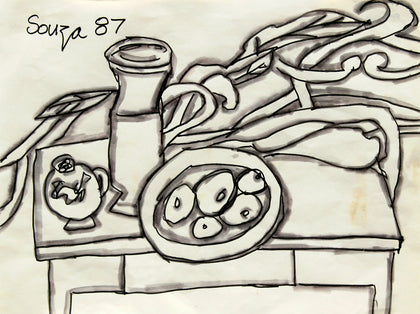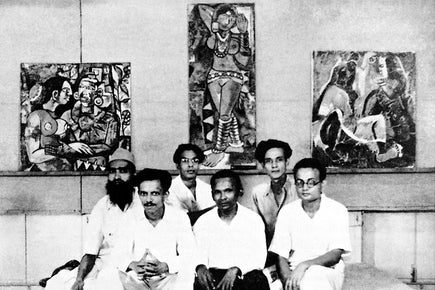
F.N. Souza

Francis Newton Souza, more popularly known as F.N. Souza, is one of India’s most acclaimed and expensive artists, who was the first post-independence Indian artist to receive wide acclaim in the West. Born in 1924 in Saligao, Goa, he was known for producing thought provoking and powerful imagery through his unrestrained and graphic art work. In 1929, he survived a severe bout of smallpox, which left him scarred for life.
Souza enrolled at the prestigious Sir J.J. School of Art in Mumbai, but was expelled in 1945 for supporting the Quit India Movement. Along with his contemporaries, namely S.H. Raza, M.F. Husain, K.H. Ara, H.A. Gade and S.K. Bakre, Souza started the Progressive Artists’ Group in Bombay in 1947, that aimed to create a distinct modernist identity for Indian art.
In 1948, his paintings were exhibited in London, and in 1949, F.N. Souza moved there. Because of the time he spent abroad, his art was influenced by movements such as Expressionism and Art Brut. F.N. Souza’s body of work is as vast as the range of subjects he has painted. His repertoire covered still life, landscapes, icons of Christianity and nudes. Inspired by raw emotions, his art sometimes represented the sexual friction between men and women. Souza’s work is characterised by minimal lines and bold, frenzied distortions of form.
An artistic genius, F.N. Souza received many prestigious awards across the span of his illustrious career, such as the Guggenheim International Award in 1967. Souza’s works are part of important art collections and have sold across the world for millions of dollars. He broke records with his painting “Birth” which was sold at US$ 4.08 million at a Christie’s auction in New York, in 2015. F.N. Souza passed away in March 2002 in New York, where he lived since 1967.
























































































